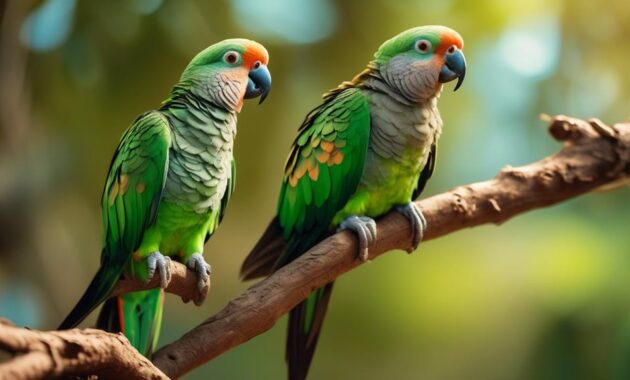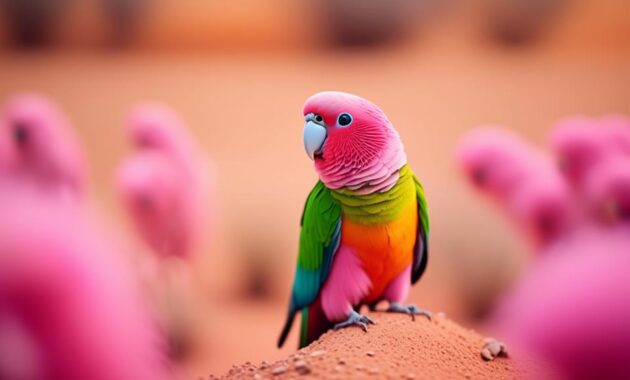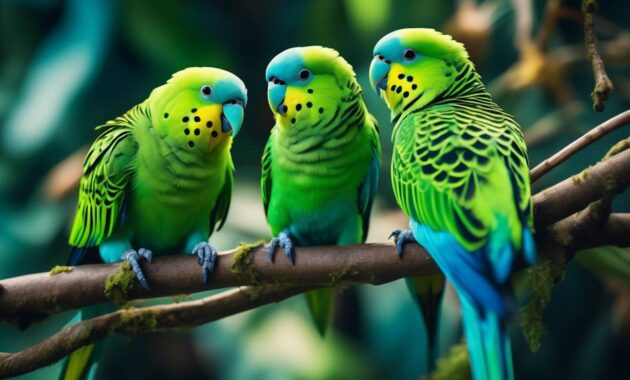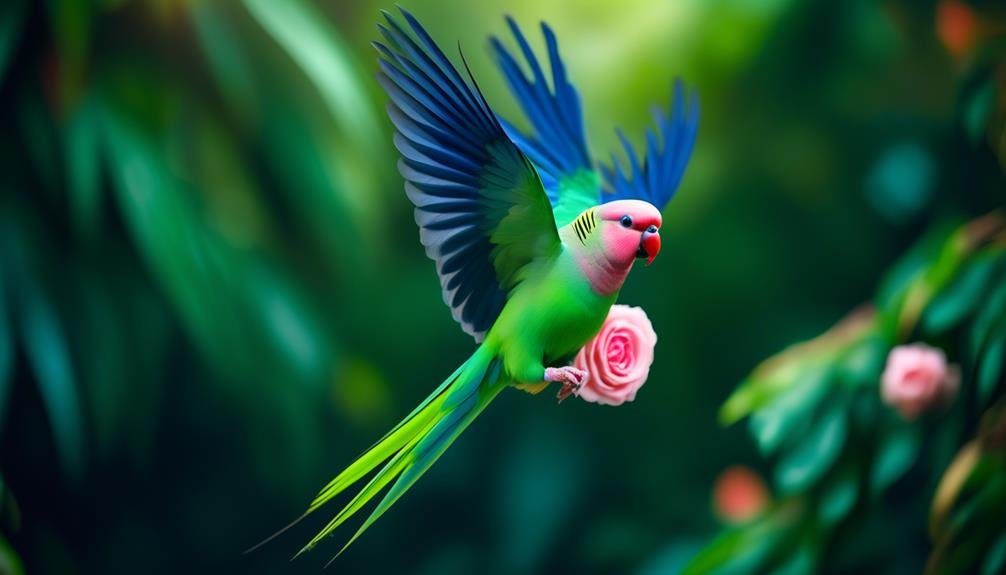
In a world filled with countless species of birds, one stands out for its captivating beauty and remarkable personality: the Alexandrine Parakeet. With its vibrant green plumage and striking features, this medium-large sized bird has captured the attention of bird enthusiasts around the globe.
But what makes this parakeet truly unique? What secrets lie behind its colorful world? Join us as we unravel the mysteries of the Alexandrine Parakeet and uncover the hidden wonders that await.
Key Takeaways
- The Alexandrine Parakeet is a medium-large sized bird with a lifespan of up to 40 years.
- It has a vibrant plumage with bright green as the main color, blue overtones on the cheeks and back of the neck, and males have a pink collar and a red beak.
- The bird is native to South Asia and is commonly found in forests and jungles, nesting in tree hollows for safety.
- Alexandrine Parakeets are social and playful birds, known for their whistling abilities and ability to mimic sounds. They communicate through vocalization and body language, and enjoy spending time with their flock members.
Size and Lifespan
The Alexandrine Parakeet is a medium-large sized bird with adults reaching a length of 22 to 24 inches and weighing about 10 ounces. This vibrant bird species, belonging to the Parakeet family, has a lifespan of up to 40 years.
Known for its colorful appearance, the Alexandrine Parakeet has a bright green main color, which becomes lighter at the belly. Its cheeks and back of the neck have a bluish overtone, while males boast a distinctive pink collar. With a bright red and large beak, this parakeet species is hard to miss. In terms of size, the tail of an Alexandrine Parakeet can measure up to 14 inches.
Their impressive lifespan and striking appearance make them a popular choice among bird enthusiasts.
Bird Species and Colors
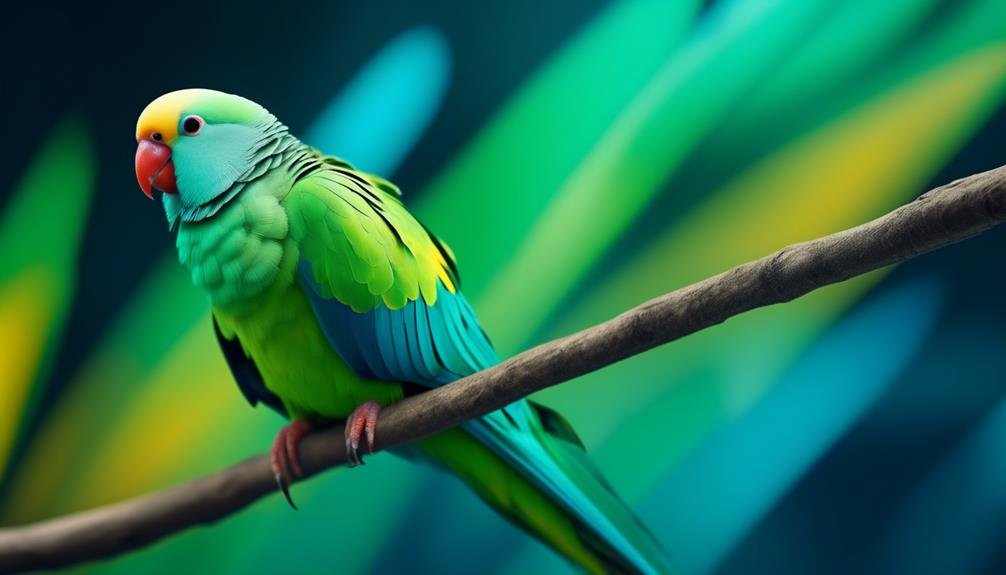
With its vibrant plumage and distinct coloration, the Alexandrine Parakeet stands out among its avian counterparts. This stunning bird species showcases a variety of colors that make it a visual delight for bird enthusiasts. Here are some key aspects of the Alexandrine Parakeet’s colors:
- Main color: The Alexandrine Parakeet is primarily bright green, with a lighter shade on its belly. This vibrant green hue adds a touch of elegance to its appearance.
- Blue overtones: The cheeks and back of the neck of the Alexandrine Parakeet have a bluish overtone, creating a beautiful contrast against its green feathers.
- Additional features: Males of this species boast a distinctive pink collar, which further enhances their striking appearance. Additionally, the Alexandrine Parakeet sports a bright red beak, adding a pop of color to its overall look.
With its captivating combination of green, blue, pink, and red, the Alexandrine Parakeet truly showcases nature’s artistic palette.
Sounds and Interaction
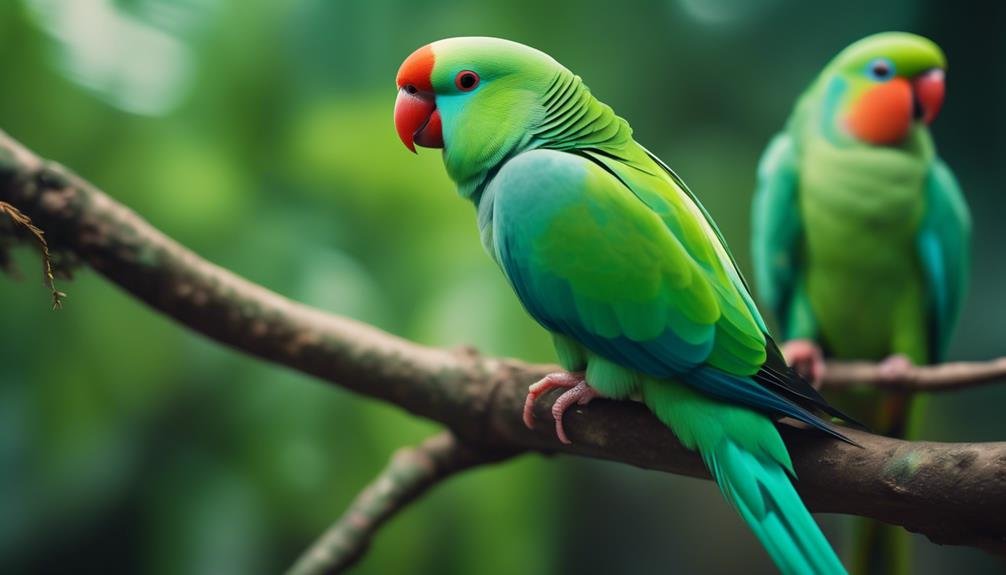
After exploring the vibrant colors of the Alexandrine Parakeet, it’s intriguing to learn about its sounds and interactive nature. The Alexandrine Parakeet is known for being a whistler, often producing a variety of vocal and noisy sounds. What sets this parakeet apart is its ability to mimic sounds, making it a fascinating companion to have around.
Additionally, the Alexandrine Parakeet is a chatterer, constantly communicating with its flock members. This parakeet species is social and playful, enjoying interaction with both humans and other birds. They’re known to be affectionate towards their owners, often seeking attention and engaging in activities together.
Understanding the sounds and interactive behavior of the Alexandrine Parakeet is essential in providing a stimulating and fulfilling environment for these beautiful birds.
Native Region and Natural Habitat
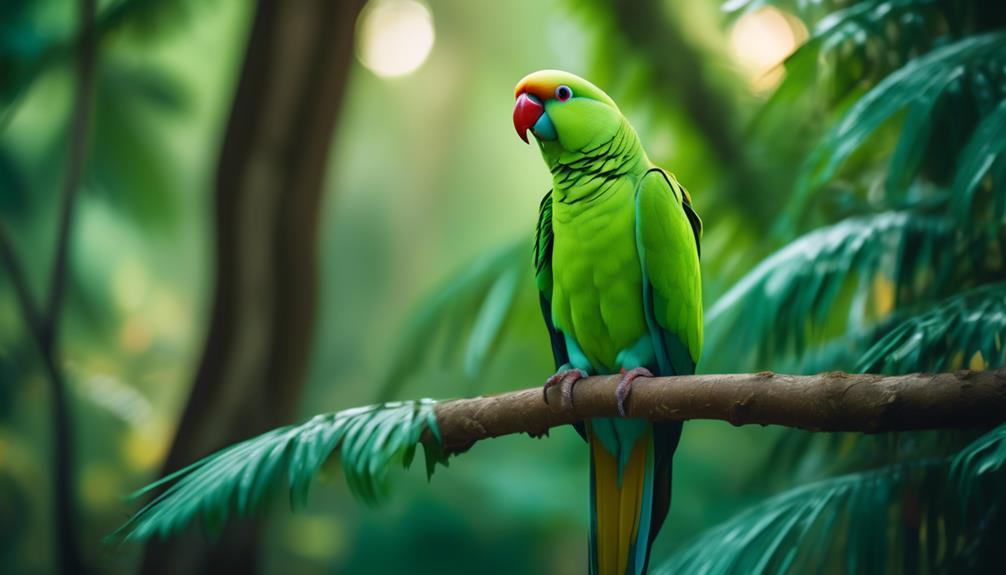
Native to South Asia, the Alexandrine Parakeet is commonly found in forests and jungles. Its natural habitat provides the perfect environment for this colorful bird to thrive.
Here are some key aspects of the native region and natural habitat of the Alexandrine Parakeet:
- Native to South Asia (India, Afghanistan, Pakistan, Ceylon)
- Found in forests and jungles
- Nest in tree hollows
These birds have adapted well to their surroundings and can be seen perched on tree branches or flying gracefully through the dense foliage. They prefer to nest in tree hollows, providing them with a safe and secure place to raise their young.
Though they’re native to South Asia, feral populations of Alexandrine Parakeets can be found worldwide. However, they’re most common and widespread in India.
Care and Health
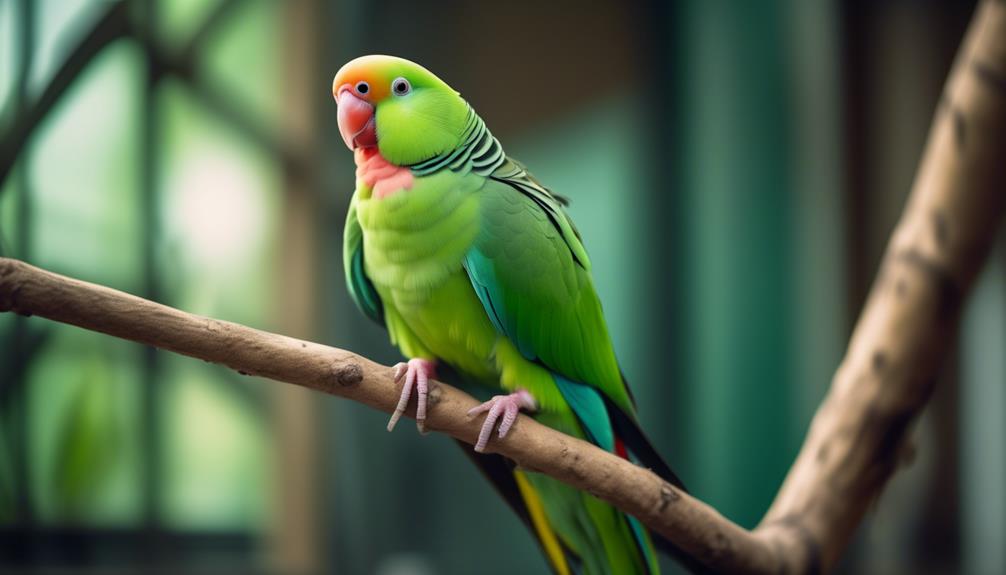
The well-being of the Alexandrine Parakeet is crucial, and proper care and maintenance are essential for its overall health. The table below provides a guide for the care and health of this exotic bird:
| Care and Health | Description |
|---|---|
| Diet | – Seeds, fruits, flower buds, and leaves |
| – Cracked walnuts, almonds, and similar nuts | |
| – Vegetables, fruits, and occasional chicken | |
| Water and Baths | – Regularly change water and offer baths |
| Balanced Diet and Optimal Conditions | – Ensure a balanced diet and optimal conditions for good health |
Physical Characteristics
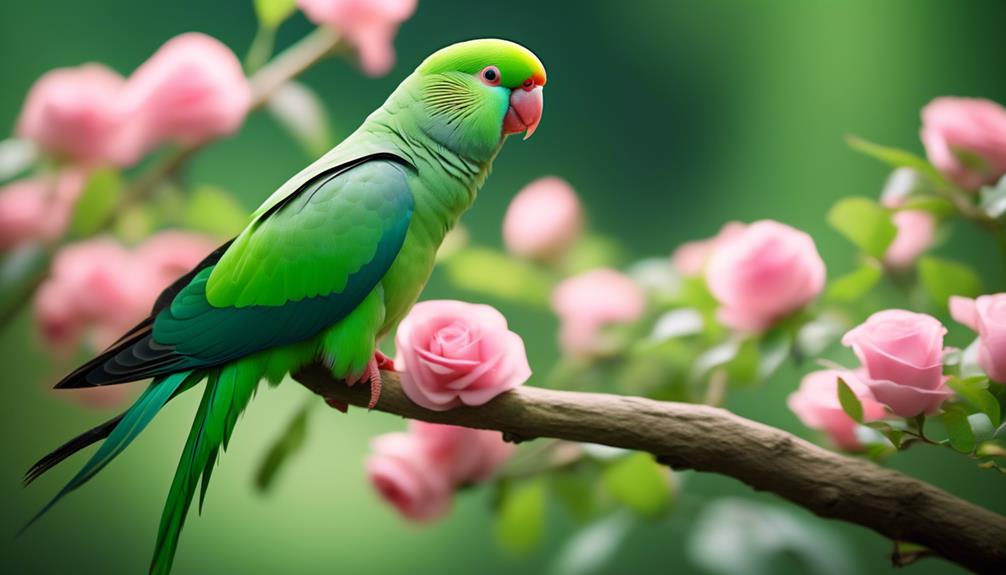
With its vibrant colors and medium-large size, the Alexandrine Parakeet is truly a sight to behold. This stunning bird possesses distinct physical characteristics that make it stand out among other parakeet species.
• Size: Adults reach a length of 22 to 24 inches, with a tail measuring up to 14 inches. They weigh about 10 ounces, making them a substantial parakeet species.
• Colors: The main color of the Alexandrine Parakeet is bright green, which is lighter at the belly. Their cheeks and back of the neck have a bluish overtone, while males have a pink collar. The standout feature is their bright red and large beak.
• Physical Features: Alexandrine Parakeets have a stocky build, a long and pointed tail, and strong wings that enable impressive flight capabilities.
These physical characteristics contribute to the unique beauty of the Alexandrine Parakeet, making it a sought-after bird among parakeet enthusiasts.
Breeding and Reproduction
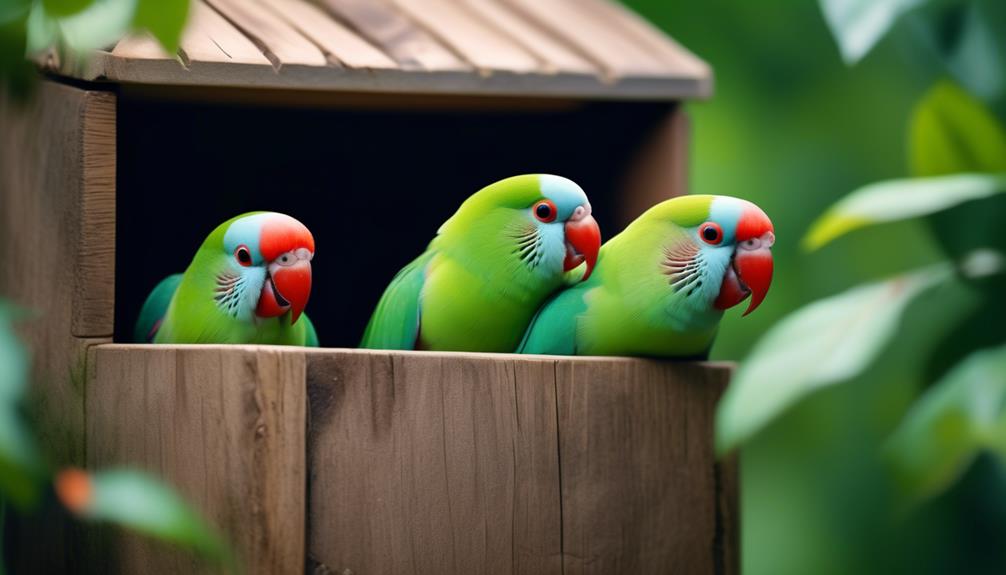
After admiring the vibrant colors and physical features of the Alexandrine Parakeet, it’s fascinating to explore its breeding and reproduction behaviors.
Breeding season for these parakeets typically occurs between November and April. During this time, the males display courtship behavior by fluffing their feathers, bobbing their heads, and making soft chirping sounds to attract the females.
Once a pair has formed, they’ll choose a suitable nesting site, often a tree hollow or a nest box. The female will lay an average of 2 to 4 eggs, which she’ll incubate for about 23 to 24 days.
Both parents take turns incubating the eggs and feeding the chicks after they hatch. The chicks stay in the nest for about 7 to 8 weeks before they fledge and become independent.
Social Behavior and Communication
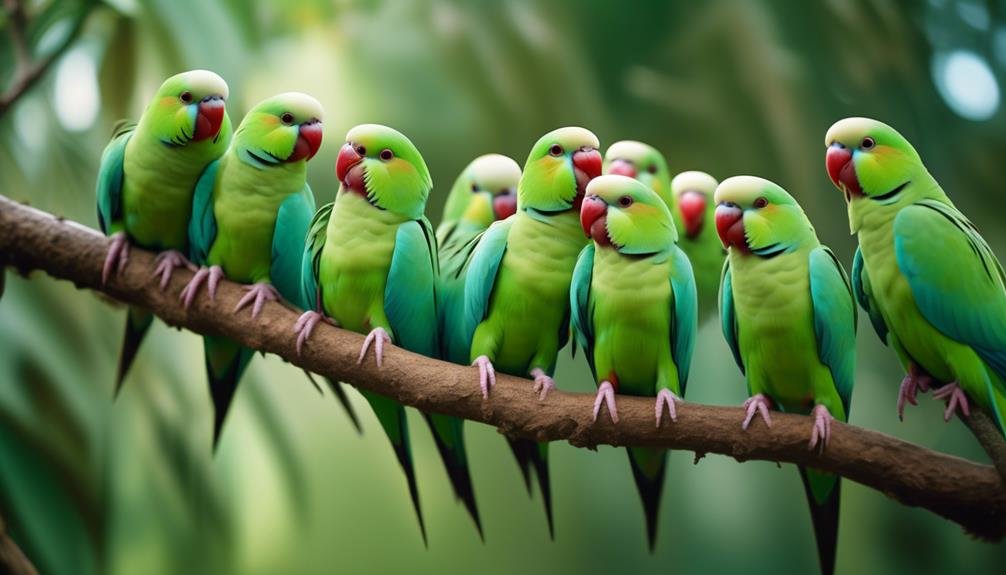
Socialization is an essential aspect of the Alexandrine Parakeet’s behavior, as they thrive on interaction with their flock members. These birds are highly social and enjoy spending time with others of their kind. They engage in various behaviors to communicate and establish social bonds.
- Vocalization: Alexandrine Parakeets are known for their vocal nature. They use a variety of calls, whistles, and chatters to communicate with each other and their human companions.
- Body Language: These parakeets also rely on body language to convey their emotions and intentions. They may puff up their feathers, bow their heads, or spread their wings to express different messages.
- Playfulness: Alexandrine Parakeets are playful birds and often engage in activities such as swinging, climbing, and exploring their surroundings. Play is an important part of their social interactions and helps strengthen their bond with others.
Training and Enrichment
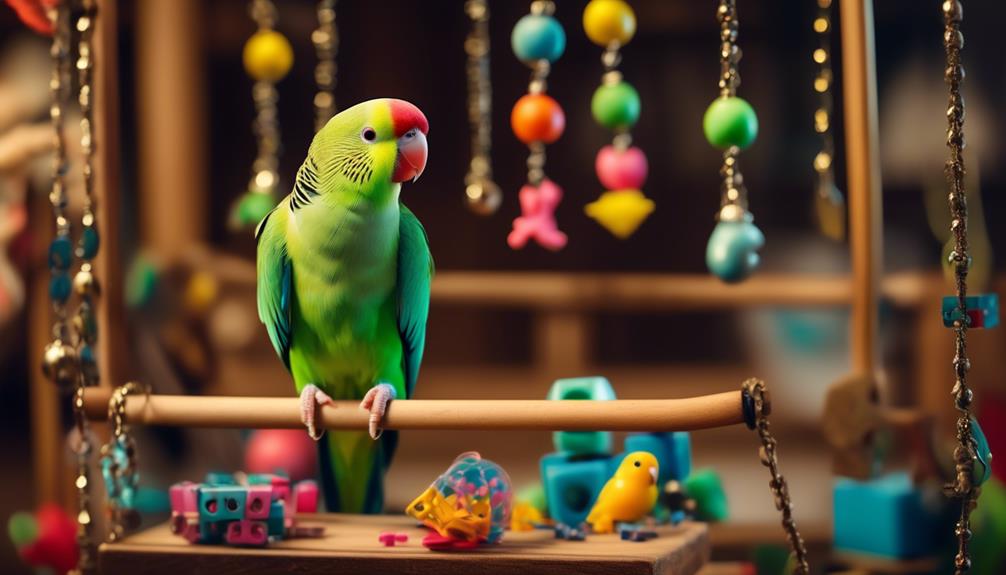
How can Alexandrine Parakeets be trained and enriched to promote their well-being and mental stimulation?
Training and enrichment are essential for the overall well-being of Alexandrine Parakeets. These intelligent birds thrive on mental stimulation and enjoy learning new tricks and behaviors. Positive reinforcement training techniques, such as using treats and praise, can be effective in teaching them commands and tricks.
Regular interaction with their owners is crucial to their social development and mental enrichment. Providing a variety of toys, puzzles, and foraging opportunities can keep their minds engaged and prevent boredom. Additionally, offering a spacious and stimulating environment with perches, swings, and climbing structures can enhance their physical and mental health.
Common Challenges and Solutions
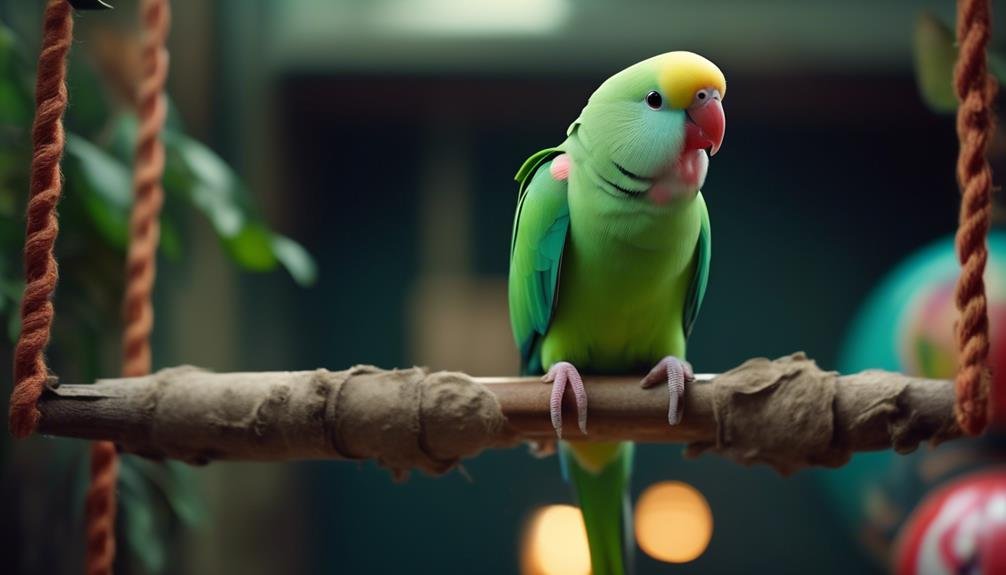
To address the challenges faced by Alexandrine Parakeet owners, it’s important to understand common issues and their corresponding solutions.
- Biting: Alexandrine Parakeets may bite when they feel threatened or scared. To prevent this, owners should give their birds plenty of space and avoid sudden movements. Gentle training techniques, such as positive reinforcement, can also help reduce biting behavior.
- Screaming: Alexandrine Parakeets are known for their loud calls, which can be disruptive in a home environment. To manage excessive screaming, owners should provide their birds with plenty of toys and mental stimulation. Regular interaction and socialization can also help reduce the need for attention-seeking vocalizations.
- Feather plucking: Some Alexandrine Parakeets may develop a habit of feather plucking, which can be caused by stress or boredom. To address this issue, owners should ensure their birds have a stimulating environment with plenty of toys and activities. Consulting a veterinarian is also important to rule out any underlying health issues causing the behavior.
Conservation Status and Legalities
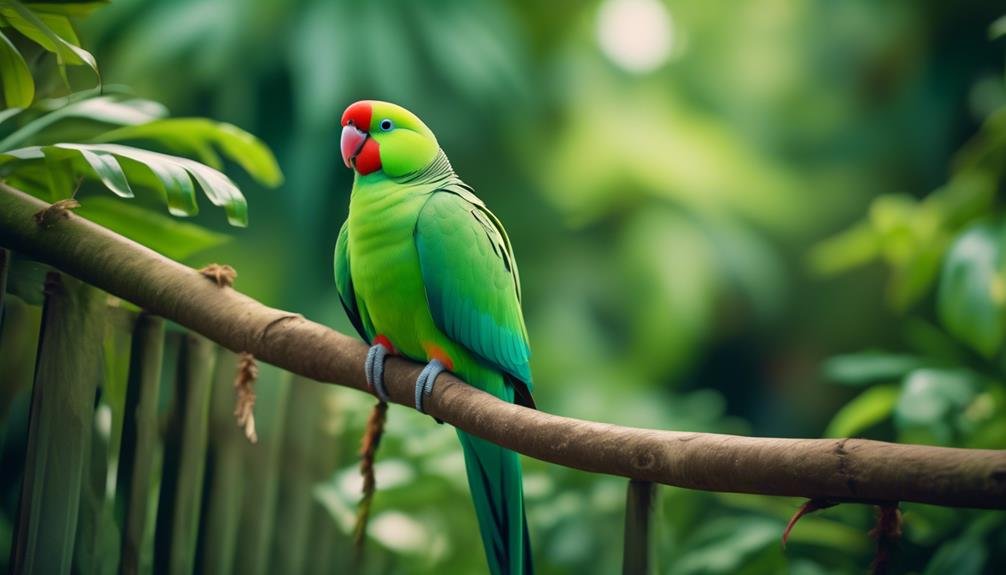
The Alexandrine Parakeet’s conservation status and legalities are important considerations for both owners and conservationists. Currently, the Alexandrine Parakeet is listed as a species of Least Concern by the International Union for Conservation of Nature (IUCN). This means that the population is stable and not facing any immediate threats.
However, it’s important to note that the Alexandrine Parakeet is protected by various national and international laws. In India, where the species is common and widespread, it’s protected under the Wildlife Protection Act of 1972. This act prohibits the capture, trade, or possession of Alexandrine Parakeets without proper permits.
Similarly, international trade of Alexandrine Parakeets is regulated under the Convention on International Trade in Endangered Species of Wild Fauna and Flora (CITES). These legal protections help ensure the long-term survival of this colorful parakeet species.
Frequently Asked Questions
What Is the Conservation Status of the Alexandrine Parakeet?
The conservation status of the Alexandrine Parakeet is not mentioned in the given context. Further information is needed to determine the current conservation status of this exotic parakeet species.
Are Alexandrine Parakeets Legal to Own as Pets in All Countries?
Alexandrine parakeets are legal to own as pets in some countries, but not all. Laws regarding pet ownership vary by country. Potential owners should research and comply with local regulations before acquiring an Alexandrine parakeet.
How Can I Train an Alexandrine Parakeet to Perform Tricks or Mimic Sounds?
To train an Alexandrine Parakeet to perform tricks or mimic sounds, start with positive reinforcement and repetition. Use treats as rewards, be patient, and provide a stimulating environment. Consistency and bonding will help build trust and encourage learning.
What Are Some Common Challenges Owners May Face When Caring for Alexandrine Parakeets?
Owners of Alexandrine Parakeets may face challenges such as training difficulties, noise levels, and the need for a spacious cage. Regular exercise, mental stimulation, and a balanced diet are crucial for their well-being.
Are There Any Specific Enrichment Activities or Toys That Alexandrine Parakeets Enjoy?
Alexandrine parakeets enjoy various enrichment activities and toys. They like playing with bells, swings, and puzzle toys. Providing them with different textures, such as ropes and branches, also keeps them entertained and mentally stimulated.
Are Red Winged Parrots Similar to Alexandrine Parakeets in Terms of Care and Characteristics?
The enchanting world of parrots is diverse, with each species having unique care requirements and characteristics. While Red Winged Parrots and Alexandrine Parakeets are both beautiful members of this world, they differ in size, coloration, and behavior, necessitating distinct care approaches to ensure their health and happiness.
Conclusion
In conclusion, the Alexandrine Parakeet is a captivating and vibrant bird species native to South Asia. With its beautiful green plumage, bluish overtone, and pink collar in males, this parakeet is a visual delight.
Its social and playful nature, ability to mimic sounds, and affinity for affectionate interactions make it a popular choice for bird enthusiasts.
By providing proper care and a balanced diet, we can ensure the well-being of this remarkable species for many years to come.


